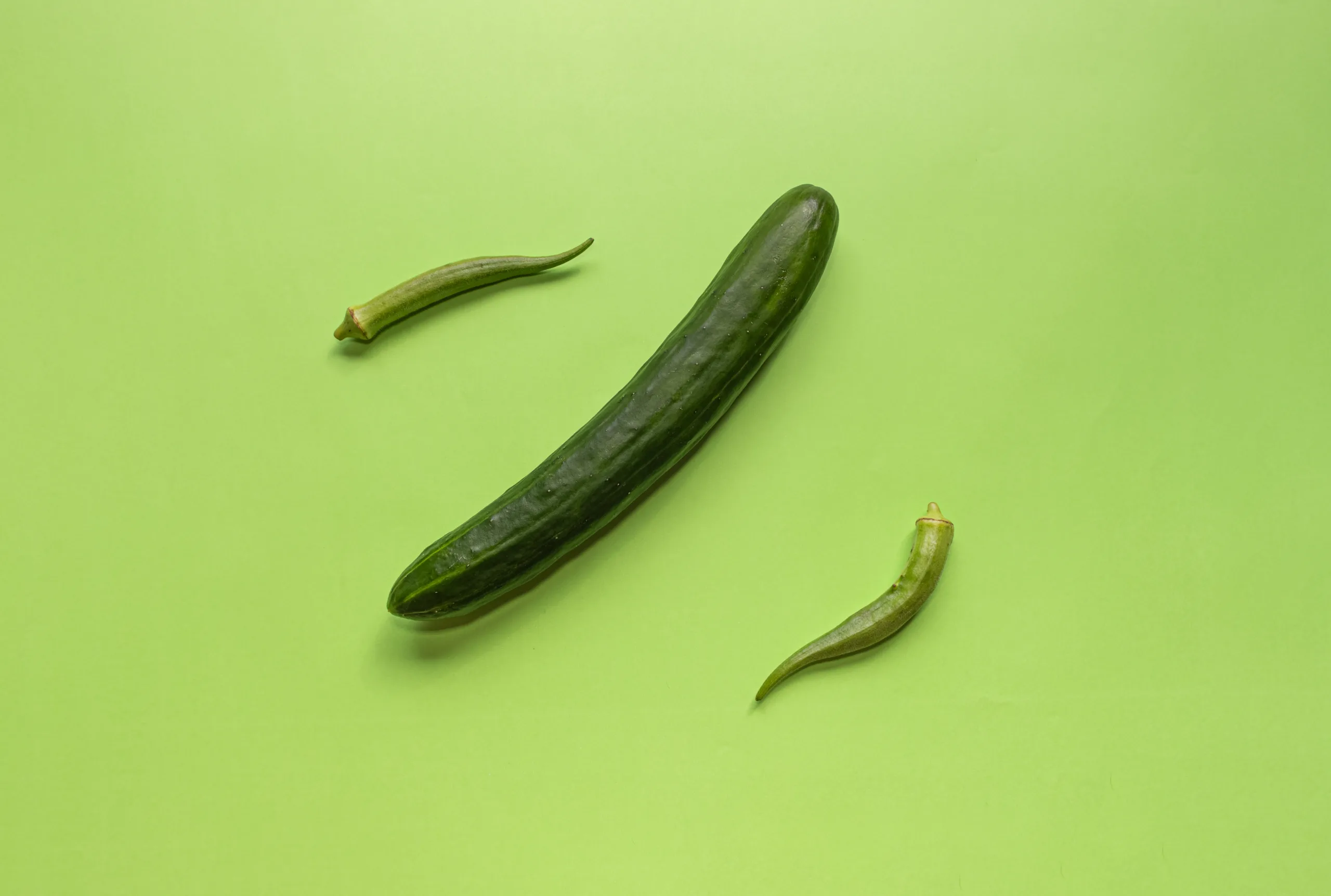Are you avoiding certain foods due to digestive discomfort? Low Fodmap Diet might be the answer to your problems! It’s a popular diet that helps people with digestive issues find relief. But how long do you need to stay on it for? Many people wonder how long they should stay on a low Fodmap diet, which can range from a few days to several weeks or even longer. In this article, we’ll discuss the benefits of the low Fodmap diet, as well as what you need to know about how long to stay on it. We’ll also cover steps you can take to determine if the diet is right for you and when it’s time to start reintroducing certain foods. By the end of this article, you’ll have a better understanding of the low Fodmap diet and what it takes to make it work for you.
A Low FODMAP Diet is a type of diet that limits foods that are high in certain carbohydrates known as FODMAPs. These carbohydrates can be difficult to digest and can cause uncomfortable symptoms such as bloating, abdominal pain, and diarrhea. The goal of a Low FODMAP Diet is to reduce digestive symptoms by avoiding foods that contain FODMAPs.
The Benefits of Low FODMAP Diet for IBS Sufferers
IBS, or Irritable Bowel Syndrome, is a common digestive disorder that can cause uncomfortable symptoms such as abdominal pain, bloating and changes in bowel habits. Fortunately, there are a variety of treatments available to help minimize and manage IBS symptoms. One of the most popular approaches is the Low FODMAP diet, which is designed to reduce the intake of certain carbohydrates that can trigger IBS symptoms. Here are some of the key benefits of this approach:
Reduced Symptoms
One of the major benefits of following a low FODMAP diet for IBS sufferers is that it can help reduce or even eliminate their symptoms. By avoiding high-FODMAP foods and focusing on low-FODMAP foods instead, many people find that their symptoms improve significantly. This can be especially helpful for those who have been struggling with chronic digestive issues.
Improved Quality Of Life
Following a low FODMAP diet can also improve overall quality of life by helping people better manage their IBS symptoms. Since IBS can cause significant discomfort and disruption to daily life, reducing symptoms through dietary changes can make a huge difference in overall well-being. This improved quality of life may also lead to better mental health, as many sufferers feel more confident and in control when their symptoms are managed.
More Variety Of Foods
Finally, while some high-FODMAP foods must be avoided on a low FODMAP diet, there are still plenty of delicious options available. There are numerous recipes online that provide creative ways to enjoy low-FODMAP meals without sacrificing flavor or nutrition. Many people find that they have more variety in their diets than before when following this approach.
How to Start a Low FODMAP Diet?
Starting a low FODMAP diet can be an effective way to manage digestive symptoms such as bloating, gas, cramping, and diarrhea. A low FODMAP diet involves eliminating certain foods that are high in fermentable carbohydrates. These carbohydrates are broken down by bacteria in the gut and can cause digestive symptoms in some people. To begin a low FODMAP diet, it is important to understand which foods are high in fermentable carbohydrates and can be eliminated from your diet.
Click here to preview your posts with PRO themes ››
The first step for starting a low FODMAP diet is to familiarize yourself with which foods contain fermentable carbohydrates. This information can be found online or from your doctor or registered dietitian. Once you know which foods are high in fermentable carbohydrates, you can start slowly eliminating them from your diet. It is important to introduce new foods gradually to allow your gut time to adjust and avoid potential digestive distress.
It is also important to note that the low FODMAP diet should not be continued long-term without medical supervision and guidance. The low FODMAP diet should be used as an elimination and reintroduction protocol, not as a long-term dietary solution. By working with a doctor or registered dietitian who has experience with the low FODMAP diet, you can ensure that you are following the protocol correctly and getting the most benefit from it.
In addition to eliminating high-FODMAP foods from your diet, it is also important to focus on eating a balanced and varied selection of nutritious whole food options such as fruits, vegetables, lean proteins, whole grains, legumes, nuts, and seeds. Eating a variety of nutrient-dense whole food options will help ensure that you get all the essential nutrients while still following the low FODMAP protocol.
Starting a low FODMAP diet can be an effective way to manage digestive symptoms such as bloating, gas, cramping, or diarrhea but it is important to do so with medical supervision and guidance for best results. By understanding which foods contain fermentable carbohydrates and slowly introducing new foods into your diet while focusing on balanced nutrition overall; you can enjoy improved digestive health on a low FODMAP meal plan.
What is a Low FODMAP Diet?
A low FODMAP diet is a type of eating plan that limits certain types of carbohydrates known as fermentable oligosaccharides, disaccharides, monosaccharides and polyols. These are collectively referred to as FODMAPs. The low FODMAP diet helps reduce symptoms of irritable bowel syndrome (IBS) such as bloating, abdominal pain, gas, diarrhea and constipation. It is important to note that this diet should only be followed after consulting with a healthcare professional or registered dietitian.
What Foods to Include on a Low FODMAP Diet?
When following a low FODMAP diet, it is important to include a variety of nutrient-dense foods that are low in FODMAPs. These include proteins such as eggs, tofu, chicken, fish and seafood, nuts and seeds; non-starchy vegetables such as cucumber, lettuce, bell pepper and kale; grains such as quinoa and brown rice; and healthy fats such as olive oil, avocado and nut butters. It is also important to drink plenty of fluids throughout the day.
What Foods to Avoid on a Low FODMAP Diet?
When following a low FODMAP diet it’s important to avoid foods high in fermentable carbohydrates including some fruits such as apples and pears; dairy products such as milk and yogurt; legumes including chickpeas, lentils and beans; sweeteners including honey and agave nectar; high-FODMAP grains like wheat and rye; certain vegetables including garlic and onions; processed meats like sausage and salami; artificial sweeteners like sorbitol; mushrooms; sugar alcohols like mannitol; certain beverages like beer and wine.
How Long Should You Stay on a Low FODMAP Diet?
A low FODMAP diet is an effective way to reduce symptoms of irritable bowel syndrome (IBS). It helps to decrease bloating, gas, abdominal discomfort and other gastrointestinal issues. However, it can be difficult to know how long you should stay on the diet. In general, it is recommended that you stay on the low FODMAP diet for at least two to six weeks. This allows your body to get used to the new foods and adjust to the changes in your diet.
Click here to preview your posts with PRO themes ››
During this time, it is important to keep track of your symptoms and observe any changes that occur as a result of being on the diet. If you are noticing an improvement in your symptoms, then it is usually safe to stay on the low FODMAP diet for longer periods of time. However, if your symptoms have not improved after two to six weeks then it may be beneficial to seek professional medical advice.
After two to six weeks of being on the low FODMAP diet, most people find that their symptoms have improved or at least stabilized. At this point, you may wish to start reintroducing some higher FODMAP foods back into your diet in a carefully controlled way in order to determine which foods trigger symptoms for you personally. This process should be done under the guidance of a qualified health professional such as a Registered Dietitian or Gastroenterologist in order to ensure that you are doing it safely and correctly.
It is important to note that everyone will react differently when reintroducing higher FODMAP foods back into their diets. Some people may need longer than two or six weeks before they begin seeing improvements in their IBS symptoms while others may find relief within days or even hours of starting the low FODMAP diet. Ultimately, each individual must experiment with their own dietary restrictions and listen closely for any changes in their body’s response in order to determine how long they should stay on a low FODMAP diet for optimal results.

Is It Safe to Follow a Low FODMAP Diet Long-Term?
Following a low FODMAP diet for the long-term can be beneficial for those suffering from irritable bowel syndrome (IBS). This type of diet is designed to reduce the amount of fermentable carbohydrates present in the food, which can trigger symptoms such as bloating, abdominal pain, and diarrhea. While this type of diet has been found to be helpful for managing IBS symptoms, it is important to note that there are some potential risks associated with following a low FODMAP diet long-term.
One of the main concerns about following a low FODMAP diet long-term is that it may lead to nutrient deficiencies. Many foods that are high in FODMAPs are also rich in important vitamins and minerals, such as calcium, iron, and magnesium. Eliminating these foods could put individuals at risk for developing deficiencies in these nutrients over time.
Another concern is that following a low FODMAP diet may lead to an imbalanced gut microbiome. The gut microbiome is made up of trillions of bacteria, fungi, and other microorganisms. These microorganisms play an important role in maintaining our overall health and wellbeing. Research suggests that eliminating certain types of carbohydrates from the diet can have an impact on the composition of the gut microbiome over time.
Finally, research suggests that following a low FODMAP diet for too long could potentially lead to an increase in food sensitivities or allergies. This is because eliminating certain types of foods from the diet could lead to changes in our gut bacteria over time, which could make us more sensitive to certain types of foods when reintroduced into our diets later on down the line.
Overall, it is important to note that there are potential risks associated with following a low FODMAP diet long-term. It is recommended that individuals consult with their doctor or registered dietitian before making any drastic changes in their diets so they can understand all possible risks and benefits associated with this type of dietary approach.
Click here to preview your posts with PRO themes ››
Are There Any Downsides to a Low FODMAP Diet?
The low FODMAP diet is a scientifically proven way to effectively manage symptoms of irritable bowel syndrome (IBS), however, it can be difficult to stick to and there are some potential downsides that should be considered.
One downside of the low FODMAP diet is that it can be hard to follow. The diet may require a lot of meal planning and cooking in order to ensure that all the foods eaten are low in FODMAPs. Additionally, it is important to keep a food diary in order to track which foods cause any symptoms.
Another downside of the low FODMAP diet is that it may lead to nutrient deficiencies if not done properly. The diet requires cutting out many high-fiber foods, such as beans and lentils, which can lead to decreased intake of important nutrients such as iron, magnesium, and zinc. It is important for people on the low FODMAP diet to ensure they are getting enough essential vitamins and minerals from other sources.
Finally, there is some concern about the long-term effects of following a restrictive diet like the low FODMAP diet. Research into this area is still limited but some studies have suggested that it may lead to an increased risk of developing other digestive issues such as small intestinal bacterial overgrowth (SIBO). Therefore, it is important for people on this diet to talk with their doctor about their dietary needs and any potential risks before starting the diet.
Are There Any Alternatives to the Low FODMAP Diet for IBS Sufferers?
IBS (Irritable Bowel Syndrome) is a digestive disorder that affects millions of people worldwide. While the low FODMAP diet is a popular choice for reducing symptoms, there are several alternatives available for those looking for relief from their symptoms. These include eliminating certain food groups, following an elimination diet, and making dietary changes to reduce inflammation.
Eliminating certain food groups can be an effective way to reduce IBS symptoms. Common culprits include dairy, gluten, and processed foods. Eliminating these foods can help reduce inflammation in the gut and improve overall digestive health. Additionally, some people find that eliminating nightshades such as tomatoes, potatoes, and peppers helps to reduce their symptoms.
An elimination diet is another option that can help to identify which foods are causing issues for IBS sufferers. This type of diet involves cutting out certain food groups while slowly reintroducing them one by one to determine if they are causing any issues with digestion. This type of diet can be helpful in identifying specific triggers that may be causing IBS symptoms.
Making dietary changes to reduce inflammation is another option for those suffering from IBS. Foods high in fiber, omega-3 fatty acids, and antioxidants can help to reduce inflammation in the gut and improve overall digestive health. Additionally, incorporating probiotics into your diet can help promote healthy bacteria growth in the gut which can also help relieve IBS symptoms.
Overall, there are several alternatives available for those looking for relief from their IBS symptoms beyond the traditional low FODMAP diet. Eliminating certain food groups or following an elimination diet may help identify triggers that could be causing issues with digestion or making dietary changes to reduce inflammation could also prove beneficial in relieving symptoms associated with IBS.

Conclusion
The Low FODMAP diet is a powerful tool for managing IBS symptoms. It can help to identify which foods trigger symptoms and, by avoiding them, reduce the severity of symptoms. While some people may find relief within a few weeks, it’s important to remember that everyone responds differently and it could take several months for the full benefits to be felt. It’s also important to remember that this diet should only be used under the guidance of a healthcare professional and with the support of an experienced dietitian.
Overall, the Low FODMAP diet has shown to be effective in reducing IBS symptoms and improving quality of life. While it can take some time for people to get used to the changes in their diet, by following the guidance of their healthcare team, they can find relief from their symptoms and enjoy better health in the long run.

